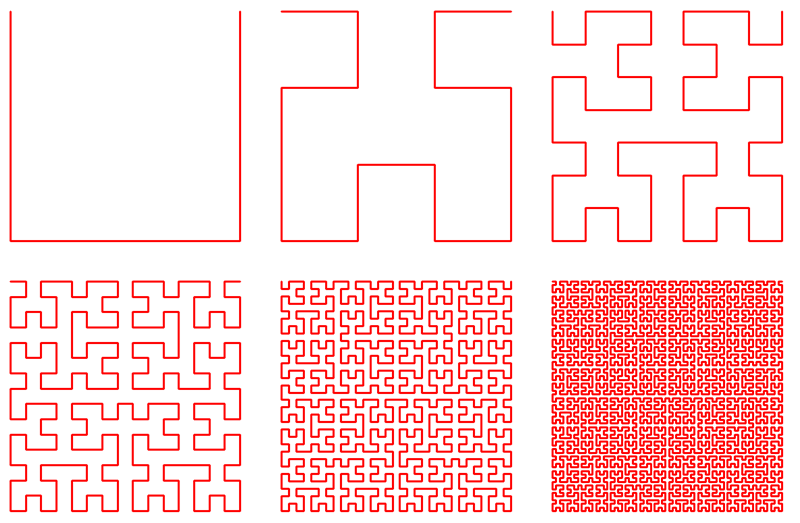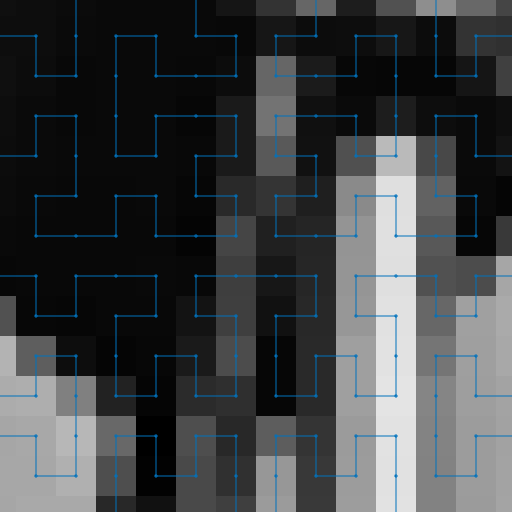This method of image scanning based on Hilbert Curve. Curve looks like (from 1 to 6 order):

It can be used for image scan. So, for example, my code for 3-order curve is:
Hilbert=[C(1,1) C(1,2) C(2,2) C(2,1) C(3,1) C(4,1) C(4,2) C(3,2) C(3,3) C(4,3) C(4,4) C(3,4)...
C(2,4) C(2,3) C(1,3) C(1,4) C(1,5) C(2,5) C(2,6) C(1,6) C(1,7) C(1,8) C(2,8) C(2,7)...
C(3,7) C(3,8) C(4,8) C(4,7) C(4,6) C(3,6) C(3,5) C(4,5) C(5,5) C(6,5) C(6,6) C(5,6)...
C(5,7) C(5,8) C(6,8) C(6,7) C(7,7) C(7,8) C(8,8) C(8,7) C(8,6) C(7,6) C(7,5) C(8,5)...
C(8,4) C(8,3) C(7,3) C(7,4) C(6,4) C(5,4) C(5,3) C(6,3) C(6,2) C(5,2) C(5,1) C(6,1)...
C(7,1) C(7,2) C(8,2) C(8,1)];
And it works and works fast. I made the same functions for 8- and 9-order curves, but it works very-very slow. 9-order, perhaps, will never end. At least, I have not had the patience to wait for the end - after 2 hours I just turned off the program. But the 7-order curve runs for 15 seconds. What's the matter? Can I do the same, but faster? Yes, the program needs to read 512 * 512 array elements, but it can not be impossible to make it faster.
So, what exactly I need - I have the coordinates of the array elements, and they are arranged in the order in which should be read. I need for acceptable time to read them and write in the new array. How to do it?
p.s. English is still hard for me, if something is unclear - ask me, please.



C(4,7)notC(8,7). The question is, how do you generate the fractal? where is your code? – Anaesthesia